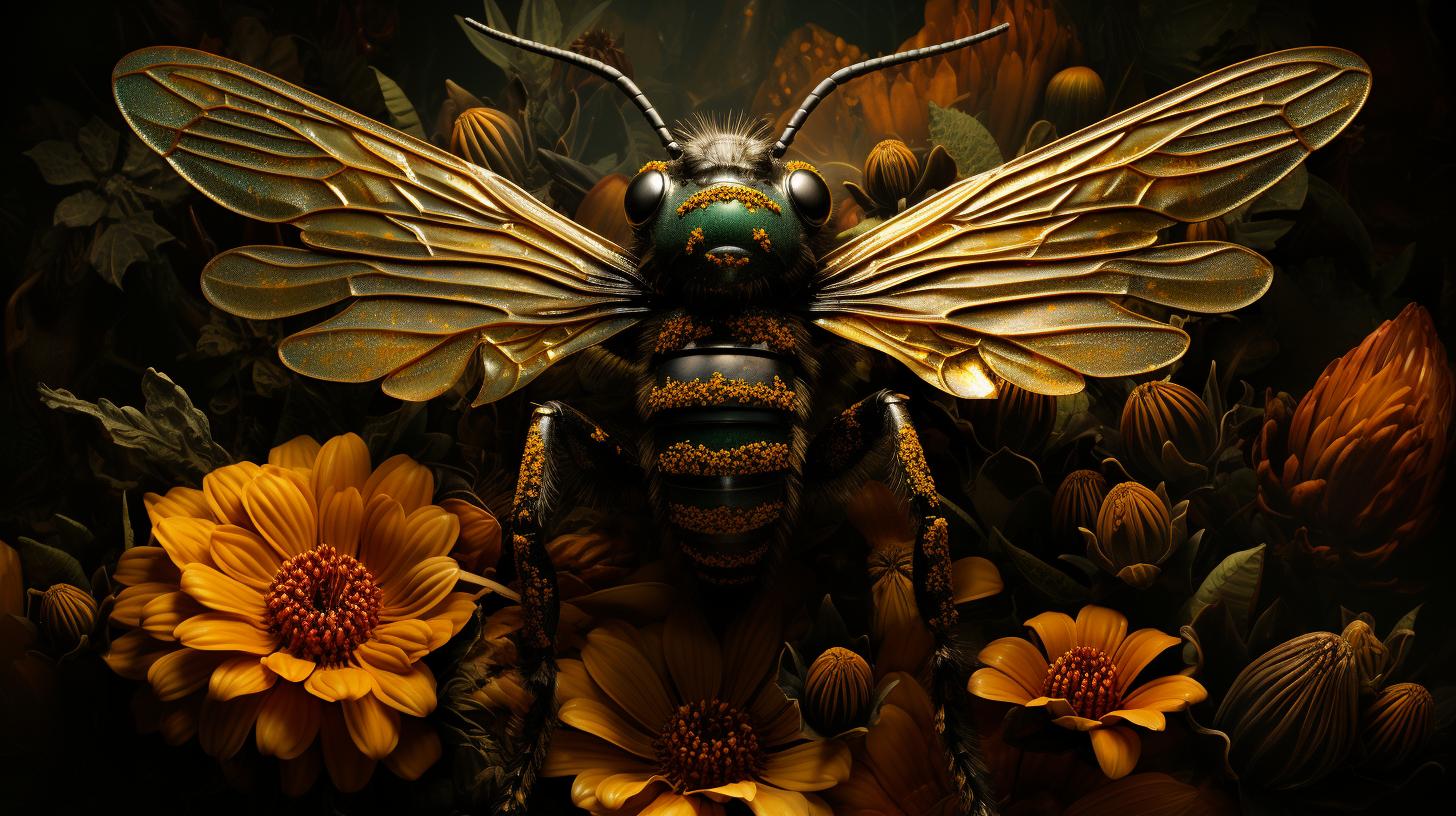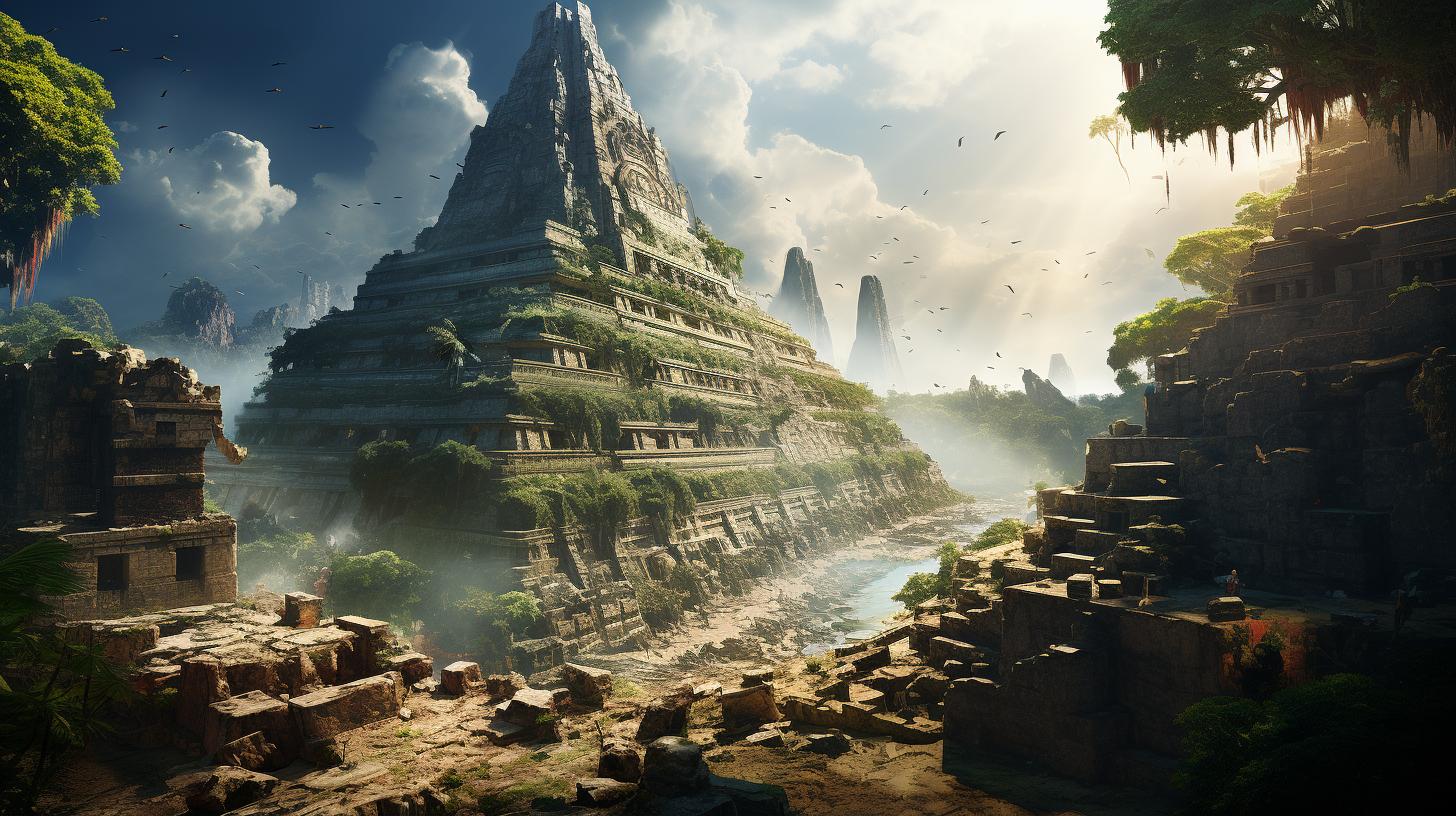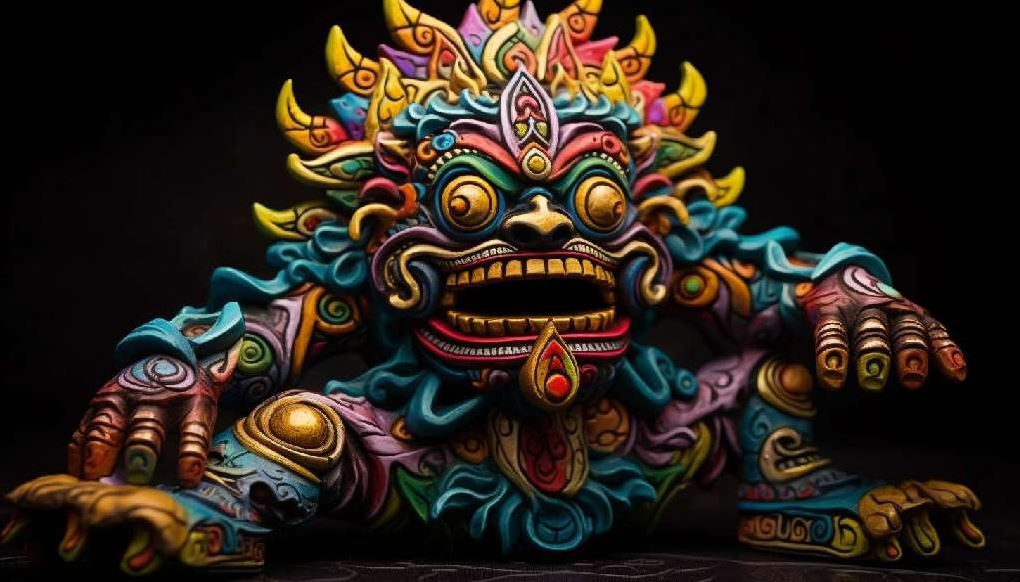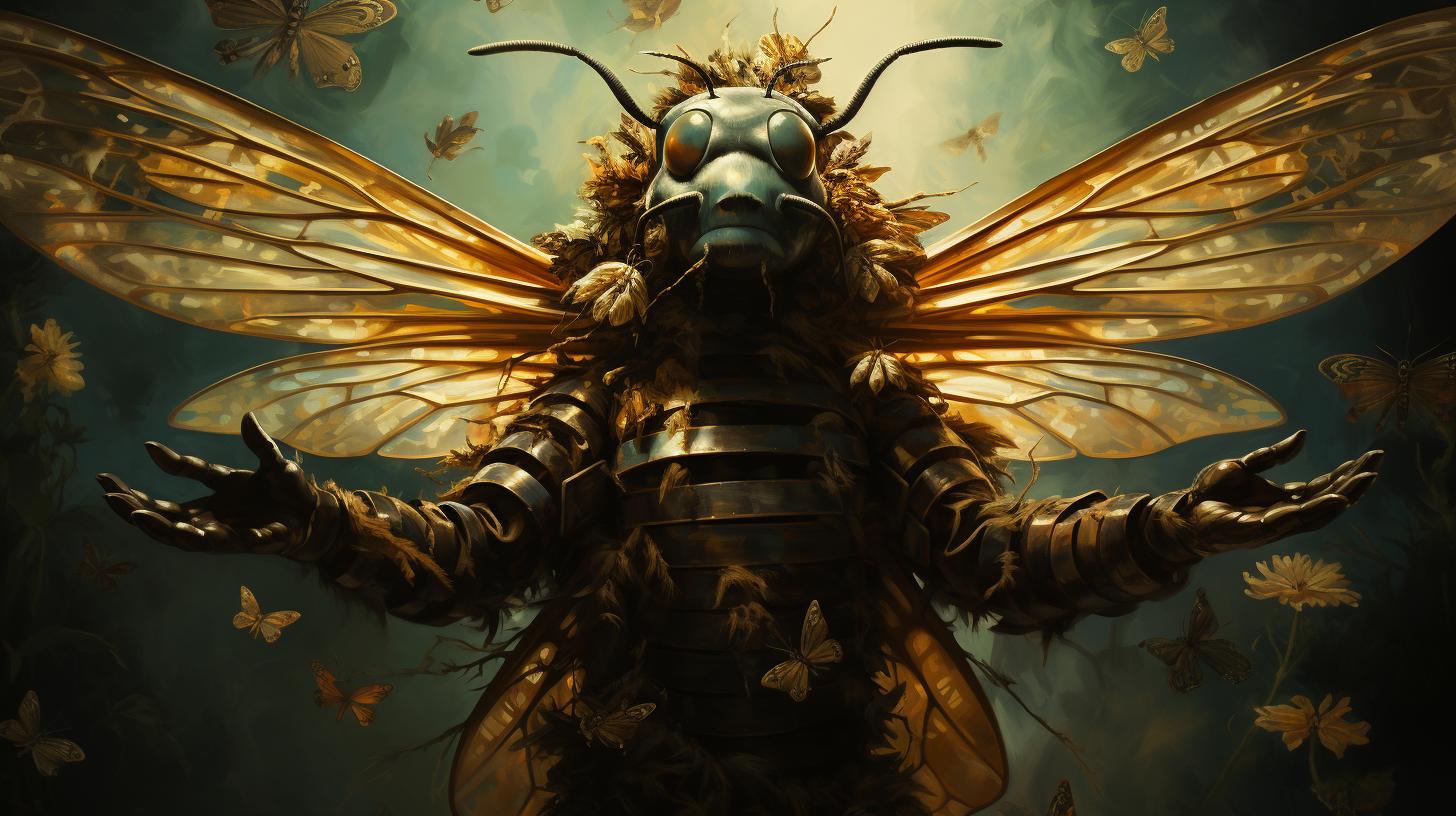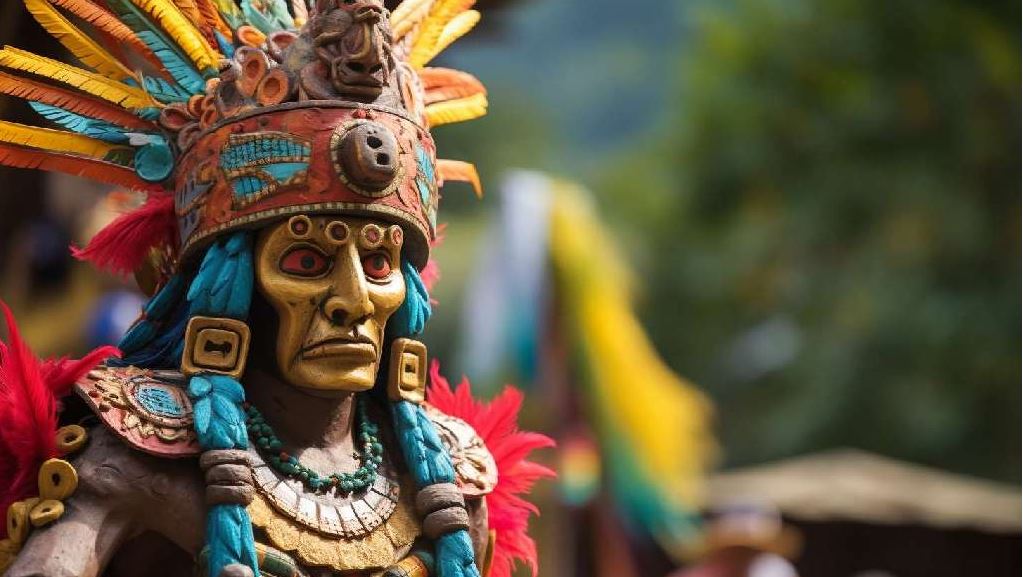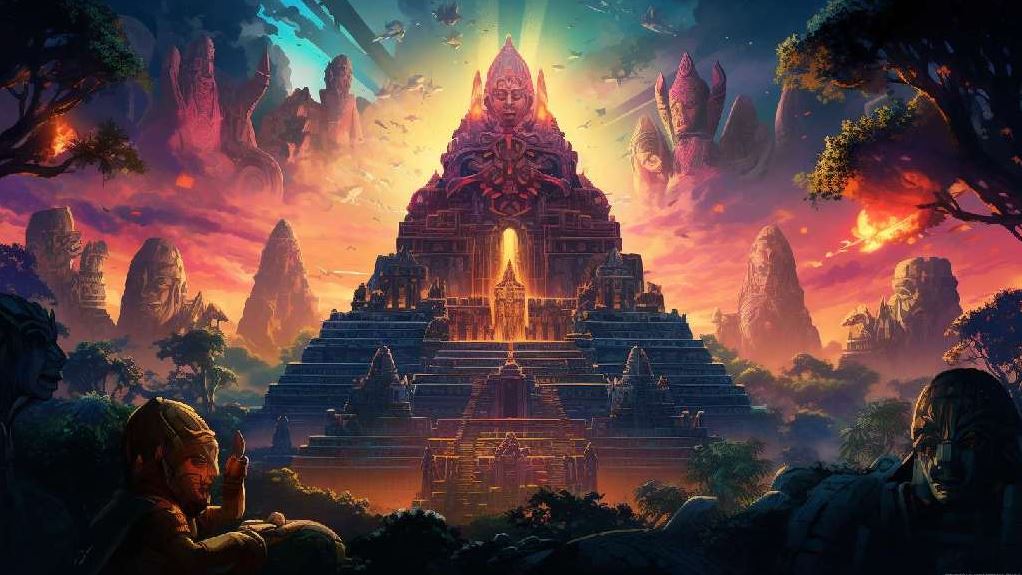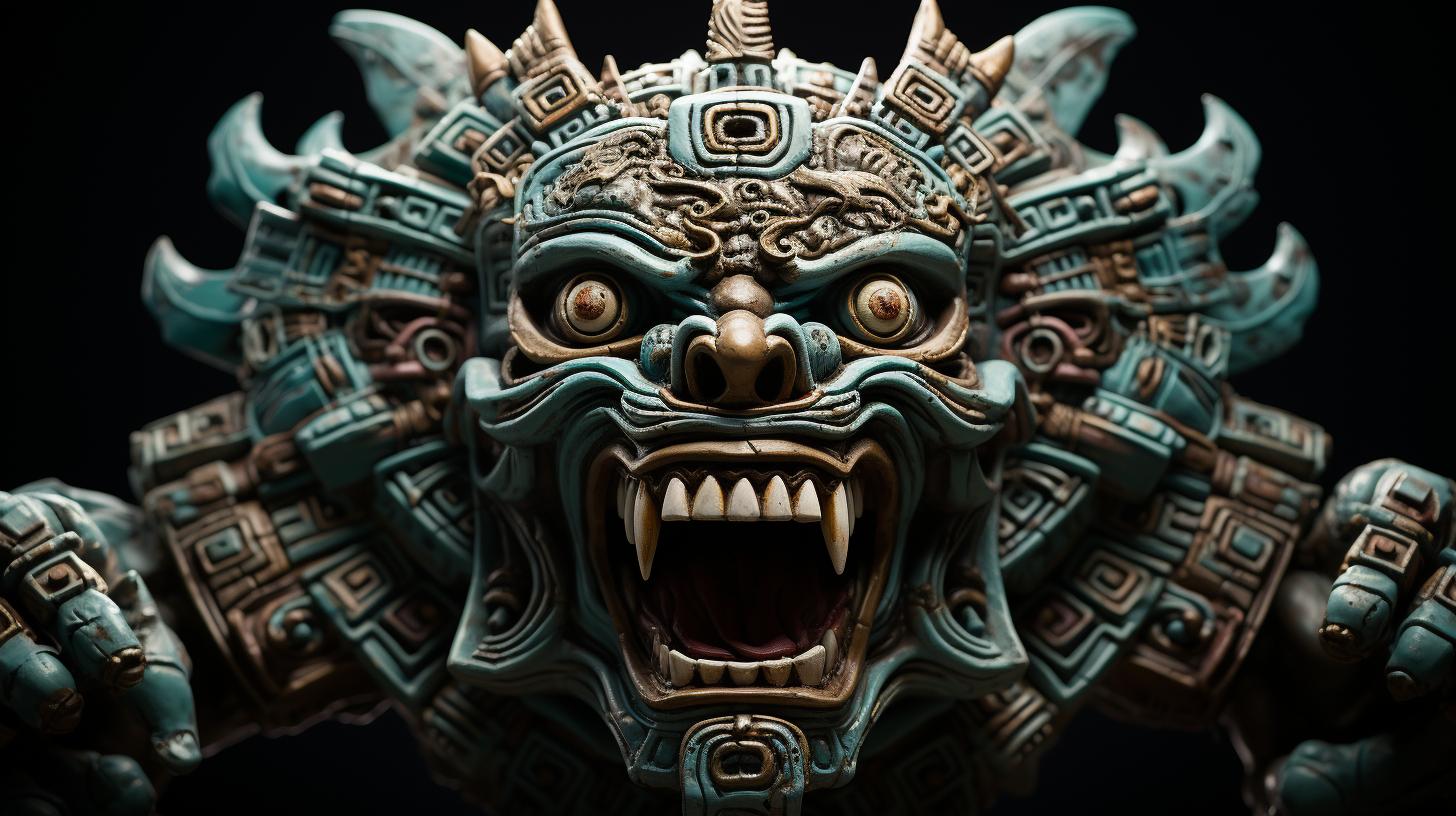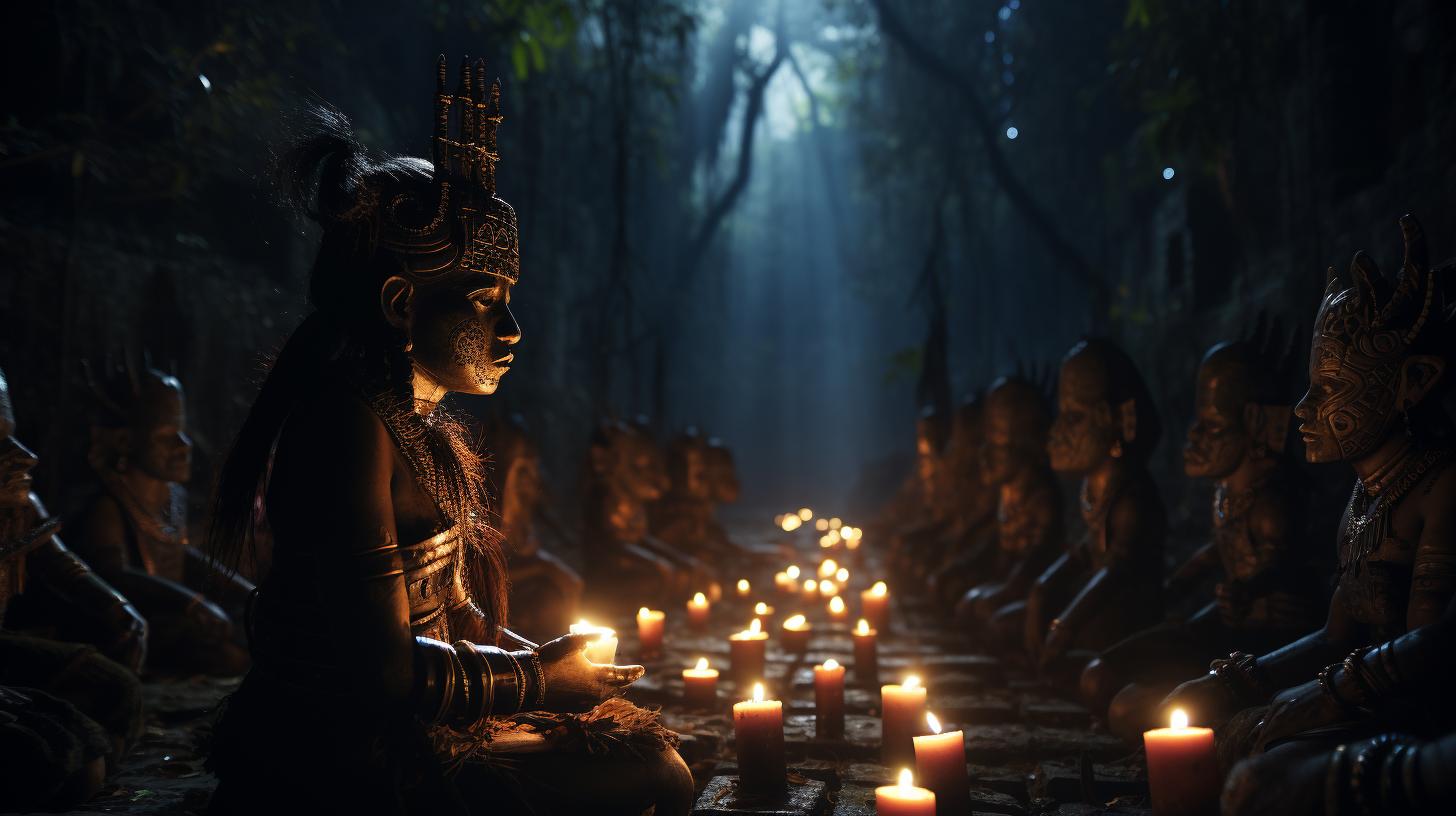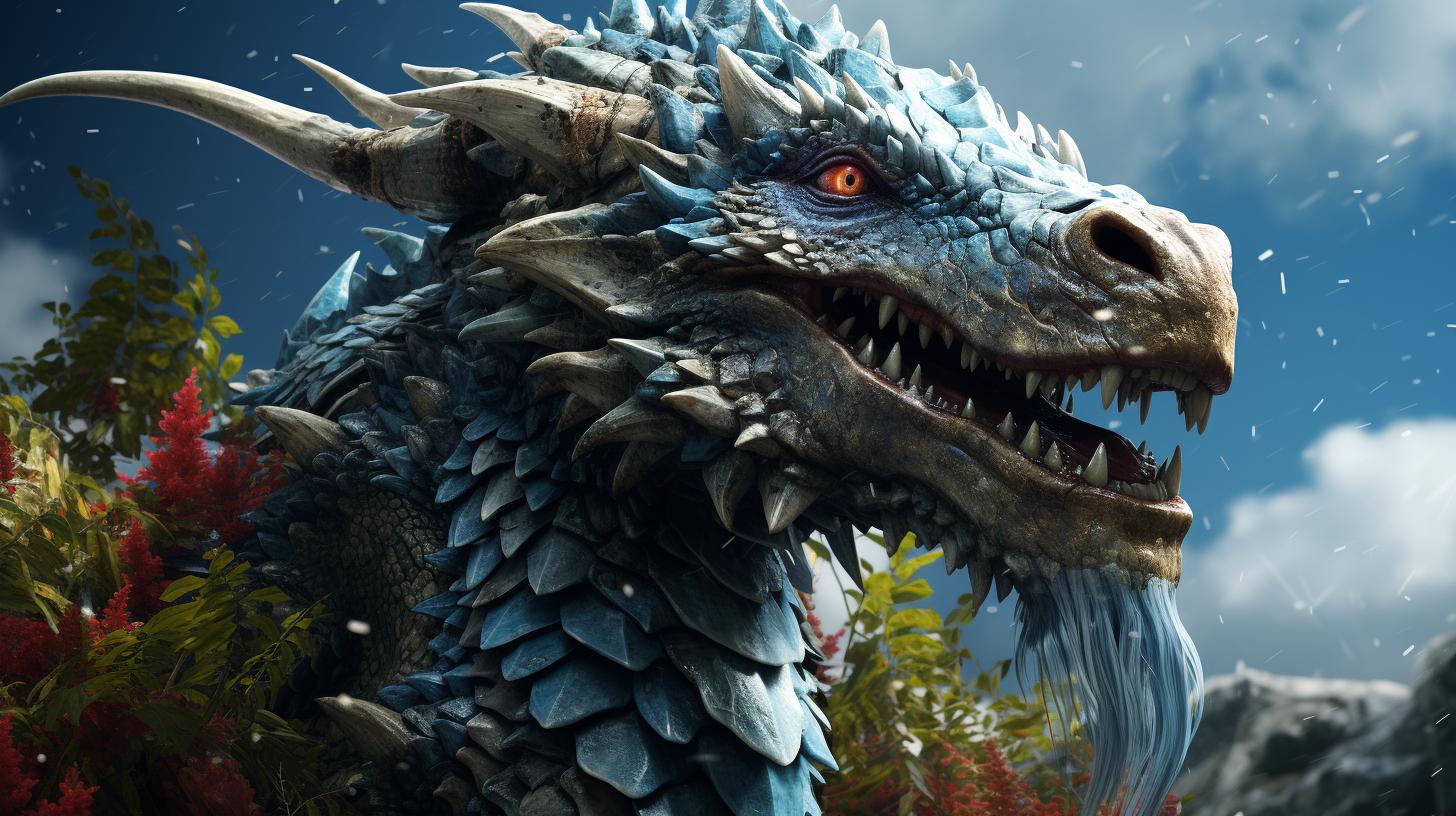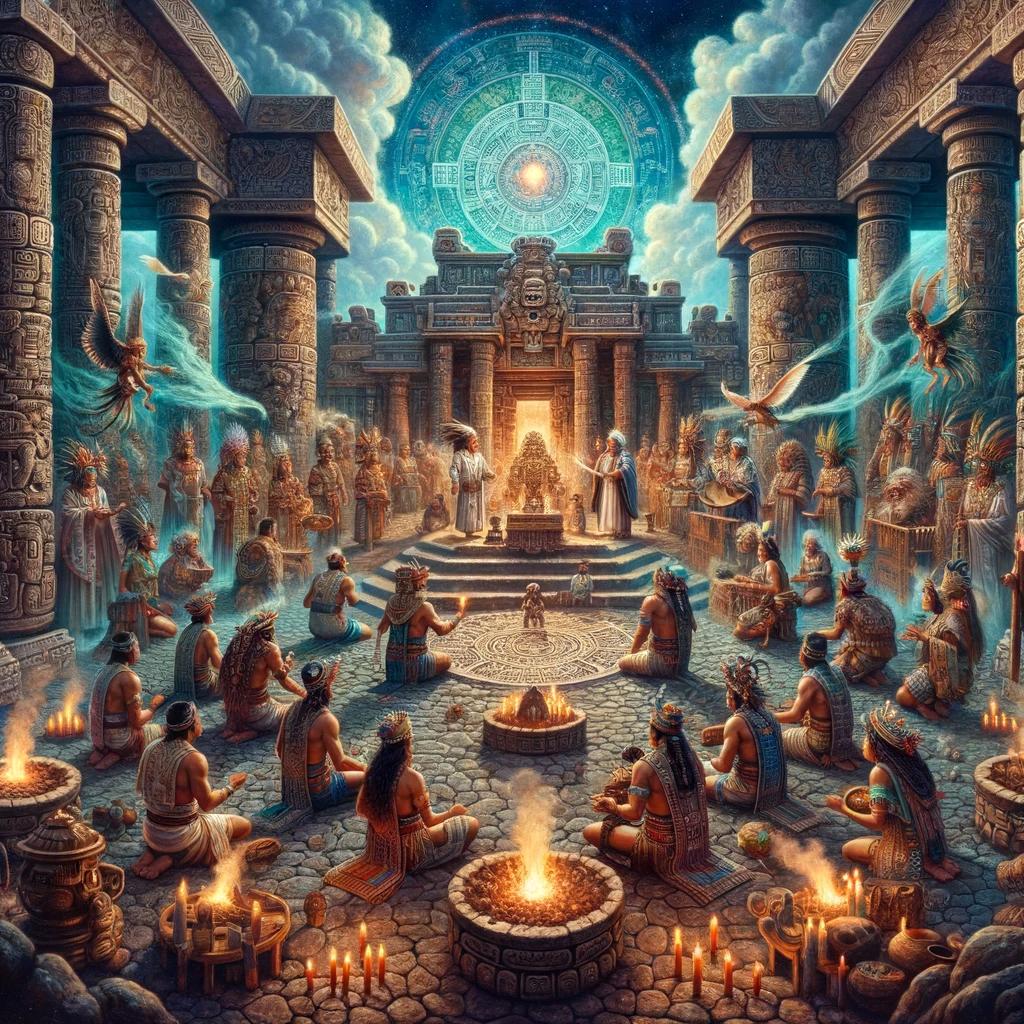What Was the Mayan Religion: Unveiling the Spiritual Beliefs of Ancient America
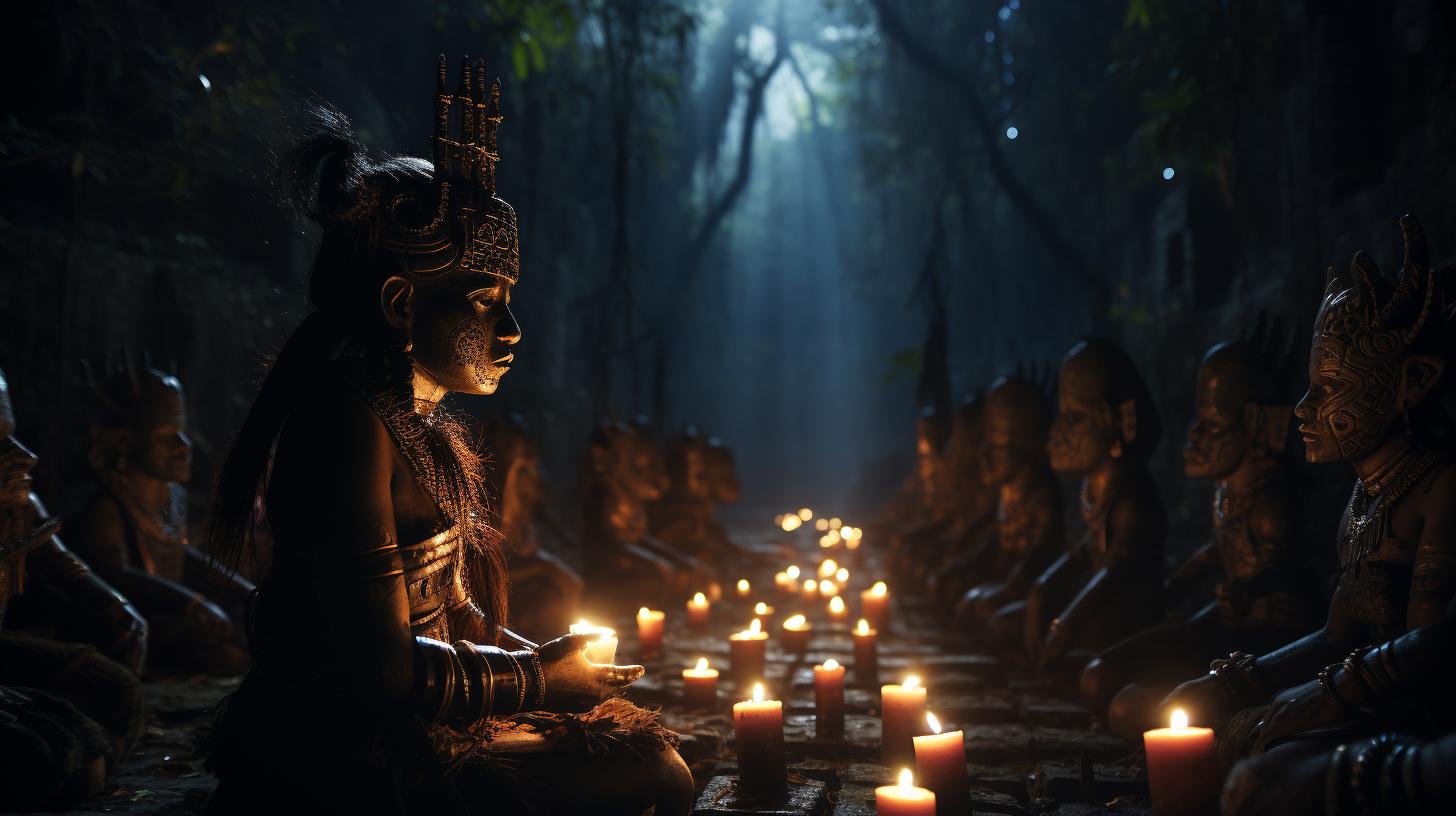
The Mayan religion, rooted in animism, embraced the belief that everything possessed a spiritual essence. Gods were revered for their ability to personify humans, foresee the future, perform miracles, and control natural phenomena.
The Popol Vuh and the Books of Chilam Balam served as vital sources of creation myths for the Maya. Their rich mythology included diverse deities such as Itzam Ná, Huracán, K’inich Ajaw, Hun H’unahpu, and Chak.
This article explores the fascinating world of Mayan religion, rituals, myths, and the enduring legacy it left behind in present-day culture.
Overview of the Mayan Civilization
The Mayan civilization, one of the most influential ancient Mesoamerican societies, flourished in Central America from approximately 2000 BC to 1500 AD. This overview delves into the rich history of the Maya, their unique religious beliefs, and the significant role of gods and deities in their culture.
History of the Maya
The Maya had a complex and sophisticated civilization that encompassed vast regions, including present-day Mexico, Guatemala, Belize, Honduras, and El Salvador. They achieved remarkable advancements in various fields, such as architecture, mathematics, astronomy, agriculture, and writing systems.
The Maya established numerous city-states and developed an intricate network of trade and communication.
Overview of Mayan Religion and Beliefs
Mayan religion was deeply rooted in animism, the belief that all things possessed a spiritual essence. The Maya held a profound reverence for the natural world, considering both animate and inanimate objects as sacred.
Their religious beliefs permeated every aspect of life, influencing societal structures, rituals, and worldview.
The Importance of Gods and Deities in Mayan Culture
The Maya worshipped a pantheon of gods and deities, each associated with specific attributes and roles. These divine beings played a crucial role in Mayan culture, serving as intermediaries between humans and the supernatural realm.
The Maya believed that gods possessed extraordinary powers to control natural phenomena, predict the future, and interact with mortals. The worship of deities was a central aspect of daily life and the practice of rituals.
In conclusion, this overview provides a glimpse into the remarkable civilization of the Maya, highlighting their intricate history, unique religious beliefs, and the profound importance of gods and deities in their culture.
Dive deeper into the fascinating world of the Mayan civilization to uncover the rich tapestry of their spiritual traditions, societal structures, and enduring legacy in present-day culture. Close all HTML tags properly.
Rituals and Practices in Mayan Religion
The Mayan civilization was deeply rooted in religious rituals and practices that played a significant role in their daily lives. These practices were intertwined with their cultural, social, and spiritual beliefs, shaping their worldview and guiding their actions.
Daily Life and Religious Practices of the Maya
In the Mayan society, religious practices were not limited to specific ceremonies or temples; they were integrated into their daily life activities. The Maya believed that their actions and offerings maintained a harmonious relationship with the divine forces and ensured the balance of the cosmos.
- Prayer and Communal Offerings: The Maya would offer prayers and make ritualistic offerings to the gods, both in the household and communal settings. These offerings could include food, flowers, incense, and even bloodletting.
- Pilgrimages and Sacred Sites: They would embark on pilgrimages to sacred sites, such as temples or natural landmarks, to perform rituals and seek spiritual guidance.
- Divination and Prophecy: Mayan religious practitioners, known as shamans, played a crucial role in seeking divine guidance through divination rituals.
They would interpret signs and omens, such as celestial events or animal behavior, to provide insights into the future.
Significance of Rituals in Mayan Society
Rituals held immense importance in Mayan society, serving various purposes beyond spiritual devotion. They acted as a means of community bonding, marking significant life events, and reinforcing social hierarchies.
- Ceremonies for Life Events: Rituals were conducted to celebrate important life events such as birth, marriage, and death. These ceremonies bestowed blessings, ensured prosperity, and eased the transition between different stages of life.
- Harvest and Agricultural Rituals: The Maya heavily relied on agriculture, and rituals were performed to honor and seek the gods’ favor for abundant harvests.
These rituals involved offerings, dances, and ceremonies conducted both individually and communally.
- Power Dynamics and Rituals: Religious rituals were also used as a way to reinforce and symbolize power structures within Mayan society.
The ruling class often associated themselves with divine figures, emphasizing their authority and legitimacy.
The Role of Shamanism in Mayan Religion
Shamanism played a vital role in Mayan religious practices, acting as mediators between the human and supernatural realms. Shamans possessed spiritual knowledge and abilities, enabling them to communicate with the gods, perform healing rituals, and provide guidance to the community.
- Healing and Medicine: Mayan shamans utilized their knowledge of herbal remedies and spiritual practices to heal the sick, cure ailments, and restore balance in the body and mind.
- Spiritual Journeys and Vision Quests: Shamans embarked on spiritual journeys, often induced by hallucinogenic substances, to commune with the gods and gain heightened spiritual insight.
These experiences influenced their interpretations and teachings.
- Role in Rituals and Ceremonies: Shamans played a central role in conducting rituals and ceremonies, acting as intermediaries between the human and divine realms.
Their presence ensured the efficacy and spiritual integrity of the rituals.
The rituals and practices within Mayan religion reflected their deep-rooted connection with the spiritual realm and the belief in maintaining harmony with the divine forces.
These practices shaped their daily lives, social structure, and worldview, leaving a lasting impact on their civilization.
Mythology and Creation Stories
Mythology and creation stories played a central role in the Mayan religion, helping to explain the origins of the world and the existence of humanity. Through these stories, the Maya sought to understand their place in the universe and the significance of their gods and deities.
This section delves into the various elements of Mayan mythology, from exploring the sacred text of the Popol Vuh to unraveling the fascinating creation myths and legends. Additionally, we will delve into the mythological entities that populated the Mayan pantheon.
Let’s embark on a journey through the realm of Mayan mystical storytelling.
Exploring the Popol Vuh: Sacred Text of the Maya
The Popol Vuh stands as one of the most significant literary works of the Mayan civilization, containing a rich compilation of myths, legends, and historical accounts. This sacred text provides valuable insights into the spiritual beliefs and cosmology of the Maya people.
We will delve into the pages of the Popol Vuh, exploring its themes, narrative structure, and its role as a guide to understanding the Mayan worldview.
Mayan Creation Myths and Legends
The Mayan creation myths recount the stories of how the world and humanity came into existence. These myths are a tapestry of extraordinary events, supernatural beings, and divine interventions. With each creation story, we gain a deeper understanding of the Mayan perspective on the origins of life.
We will uncover the captivating tales of the Mayan creation myths, examining the diverse accounts from different Mayan regions and their symbolic significance.
The Mythological Entities of the Mayan Pantheon
The Mayan pantheon was populated by a multitude of gods and deities, each with their unique attributes, roles, and symbolism. These mythological entities played a crucial role in Mayan religious practices, influencing daily life and shaping the social and cultural landscape.
In this section, we will explore the diverse gods and goddesses of the Mayan pantheon, from powerful deities like Itzam Ná and Huracán to solar gods like K’inich Ajaw. Discover the rich tapestry of Mayan mythology and the gods that held sway over the ancient Maya.
The Role of Religion in Mayan Society
Mayan Education and the Influence of Religion
Religion played a crucial role in Mayan education, shaping the beliefs and values of individuals from a young age. Children were taught about the gods, creation stories, and religious rituals as part of their formal education.
This education aimed to instill a deep reverence for the divine and an understanding of one’s place in the spiritual world. Through religious teachings, the Mayans sought to cultivate a sense of morality, duty, and respect for the gods and their fellow human beings.
The Impact of Religion on Mayan Social Structure
Mayan society was intricately intertwined with their religious beliefs. The influence of religion was apparent in all aspects of social structure, from the ruling elite to the common people. The religious class, including priests and shamans, held significant power and authority, acting as intermediaries between the human and divine realms.
They influenced decision-making, conducted rituals, and provided spiritual guidance to the community. Religion also determined social roles, with individuals’ positions and responsibilities often determined by their connection to the gods or their ability to communicate with them.
Religion and Worldview: Exploring Mayan Beliefs on Life and Death
For the Maya, religion was intimately connected to their understanding of life and death. They believed in the existence of multiple realms, including the earthly domain, the underworld, and the heavens.
Death was seen as a transitional phase rather than an endpoint, and rituals were performed to ensure a smooth journey into the afterlife. Mayans also held the belief in reincarnation, where the souls of the deceased could be reborn into new bodies.
These beliefs shaped their views on mortality, with death seen as a natural part of the cyclical nature of existence rather than something to be feared.
Symbolism and Art in Mayan Religion
The Mayan civilization was rich in symbolism and artistic expressions, which played a crucial role in their religious practices. Symbolism permeated every aspect of Mayan religious life, from their rituals to their architecture and visual art.
The Use of Symbols in Mayan Religious Practices
Mayan religious practices were deeply intertwined with symbols that held significant meanings. Symbols served as a way to communicate with the gods and convey spiritual concepts. Each symbol had its own unique significance, representing various deities, celestial bodies, natural elements, and abstract concepts.
The Mayans utilized a wide range of symbols, such as glyphs, hieroglyphs, and pictograms, to convey their religious beliefs. These symbols were often carved or painted on temple walls, pottery, codices, and other artistic mediums.
They were also incorporated into religious ceremonies and rituals, acting as a visual language that connected the earthly and spiritual realms.
Mayan Architecture and Sacred Spaces
Mayan architecture was deeply influenced by their religious beliefs and served as a physical representation of their cosmology. The Mayans built impressive structures, such as temples, pyramids, and palaces, with meticulous attention to detail and symbolism.
These architectural marvels were constructed as sacred spaces, serving as a bridge between the mortal world and the divine realm. Each structure was carefully aligned with celestial events, such as the solstices and equinoxes, reflecting the Mayans’ understanding of the cosmos.
The layout and design of these buildings also incorporated symbolic elements, such as carved reliefs, murals, and sacred altars, illustrating their religious narratives and connecting worshippers with the gods.
Religious Art and Iconography in the Mayan Civilization
Mayan religious art encompassed a wide range of mediums, including sculpture, painting, pottery, and textiles. These artistic expressions were not only visually stunning but also served as powerful means of conveying religious stories, myths, and spiritual beliefs.
Sculptures, for instance, depicted gods and goddesses with intricate details and symbolic elements that represented their attributes and powers. Mayan paintings were vibrant and colorful, often depicting religious rituals, deities, and mythological beings.
Pottery and textiles were adorned with symbols and patterns that held religious significance, further emphasizing the interconnectedness of art and spirituality in the Mayan culture.
The intricate and symbolic nature of Mayan religious art reveals the deep spirituality and reverence the Mayans had for their gods and the spiritual world. These artistic expressions continue to captivate and inspire people today, providing a window into the rich religious traditions and beliefs of the Mayan civilization.
The Legacy of the Mayan Religion
The Mayan religion has left a profound legacy that continues to resonate in contemporary society. From practices and preservation efforts to its influence on present-day culture and the misconceptions surrounding the end of the Mayan calendar, the impact of the Mayan religion is far-reaching.
Contemporary Practices and Preservation Efforts
Despite the decline of the ancient Mayan civilization, there are still communities today that practice and preserve the traditions of the Mayan religion. These communities endeavor to keep the rituals, beliefs, and ceremonies alive, ensuring the continuity of their rich spiritual heritage.
Through festivals, sacred ceremonies, and the passing down of ancestral knowledge, the Mayan religion remains an integral part of their identity.
Influence of Mayan Religion on Present-Day Culture
The influence of the Mayan religion extends beyond specific practices and rituals. Its impact can be seen in various aspects of present-day culture, including art, architecture, language, and societal structures. The intricate symbolism, intricate iconography, and architectural marvels of Mayan temples and pyramids continue to inspire and captivate people around the world.
Mayan mythology and stories still fuel the imagination, influencing contemporary literature, movies, and artwork.
Moreover, the spiritual worldview of the Mayan religion, with its emphasis on harmony with nature and the interconnectedness of all things, resonates with modern movements promoting environmental awareness and sustainability. The Mayan belief in the importance of community and collective responsibility reverberates in social and cultural values today.
Exploring the End of the Mayan Calendar: Facts and Misconceptions
One of the most widely known aspects of the Mayan religion is the end of their calendar on December 21, 2012. While some speculated theories of an apocalyptic event circled during that time, it’s crucial to separate reality from misconceptions.
The Mayan calendar simply represented the end of a long cycle and the beginning of a new one, much like the changing of seasons. It symbolized a time of renewal and rebirth, rather than an actual catastrophic event.
Exploring the Mayan calendar allows us to appreciate the precision and sophistication of their astronomical knowledge. It showcases their deep understanding of celestial movements and their ability to create intricate timekeeping systems.
While the Mayan civilization might have faded, their astronomical contributions still resonate in modern scientific studies.
By understanding the legacy of the Mayan religion, we gain valuable insights into the complex belief systems and cultural practices that shaped this ancient civilization. The profound influence it had on their daily lives, art, architecture, and societal structure continues to fascinate and inspire us today.
…

